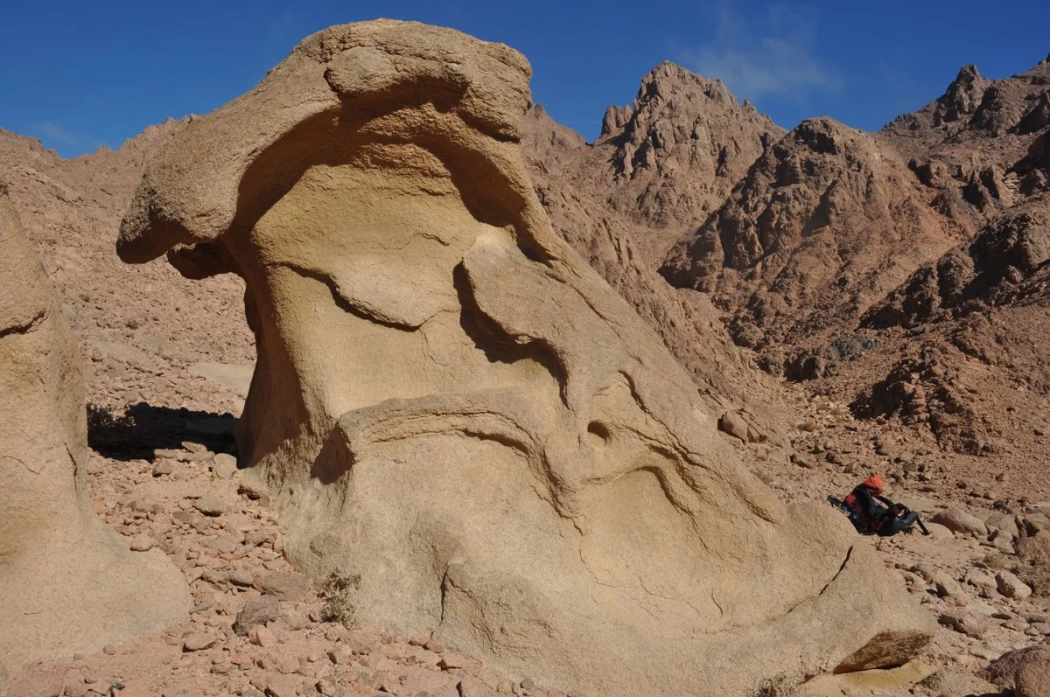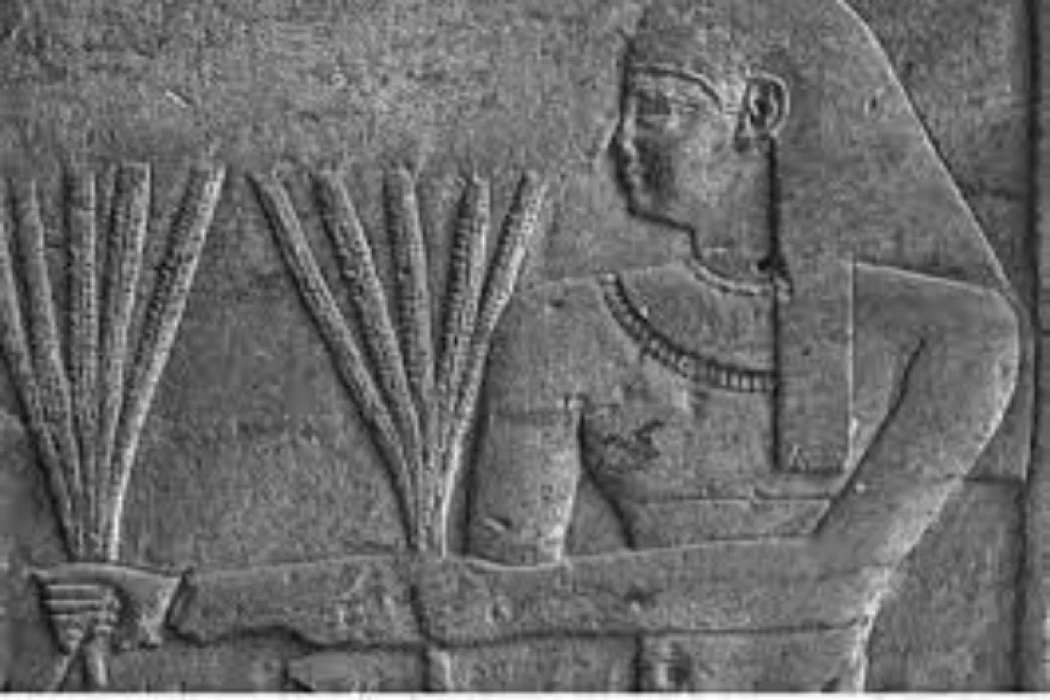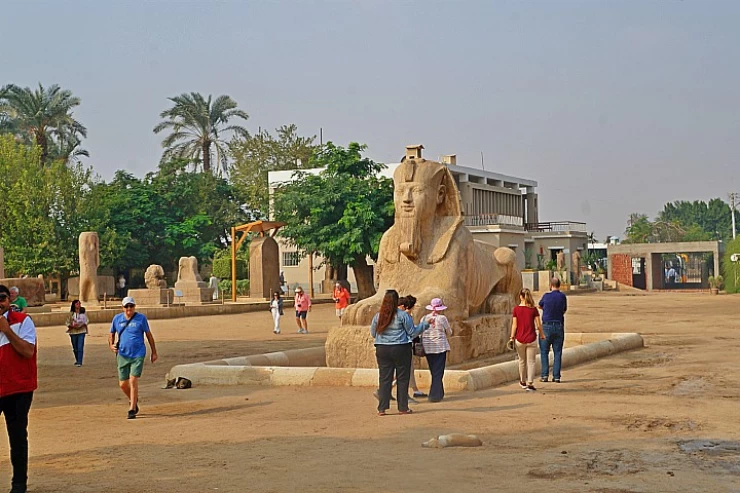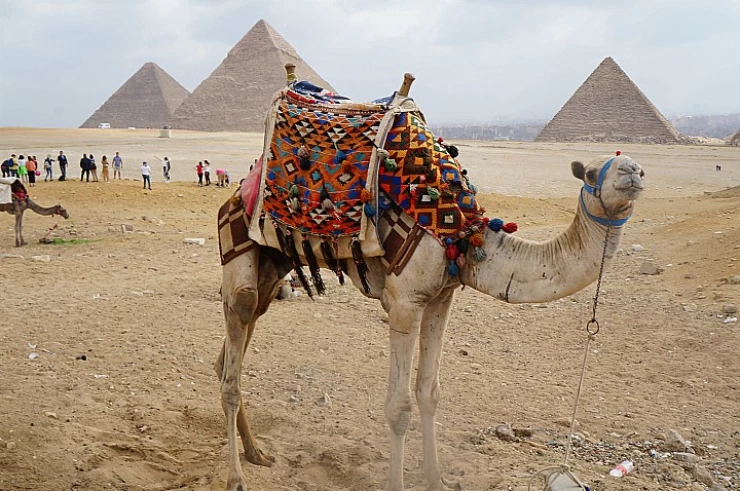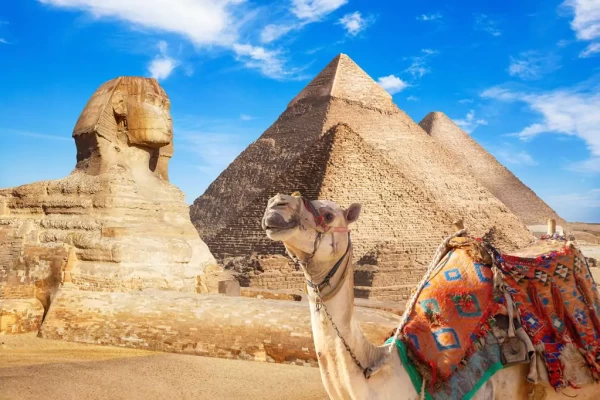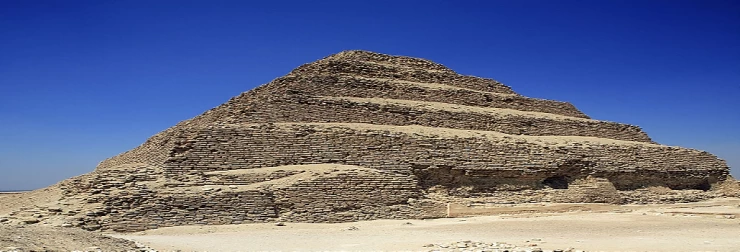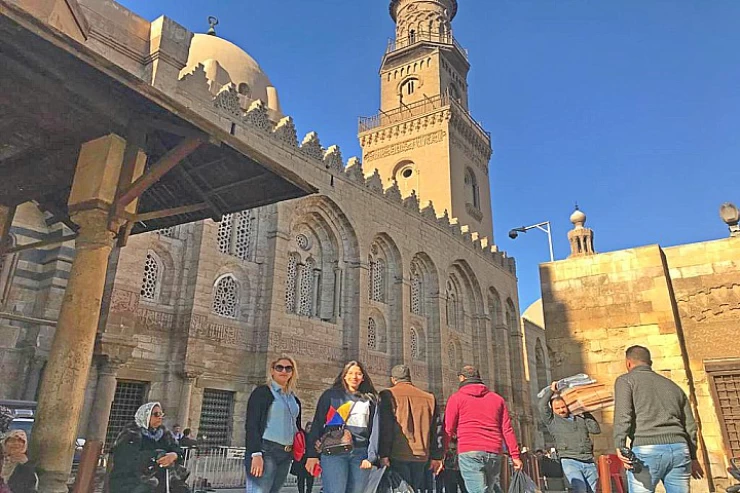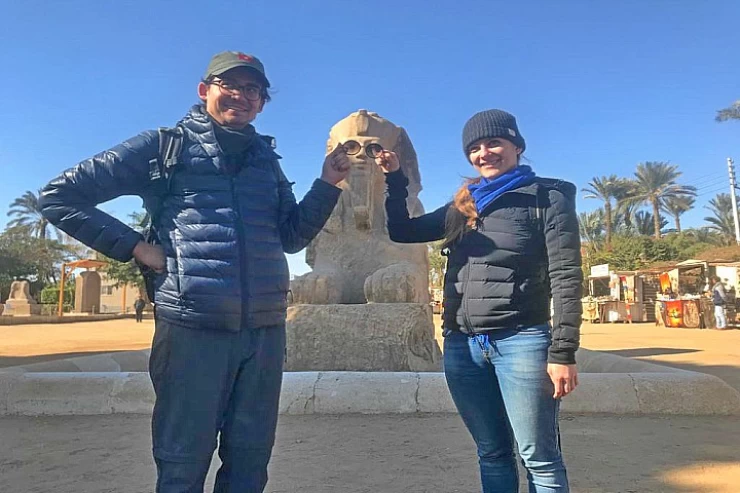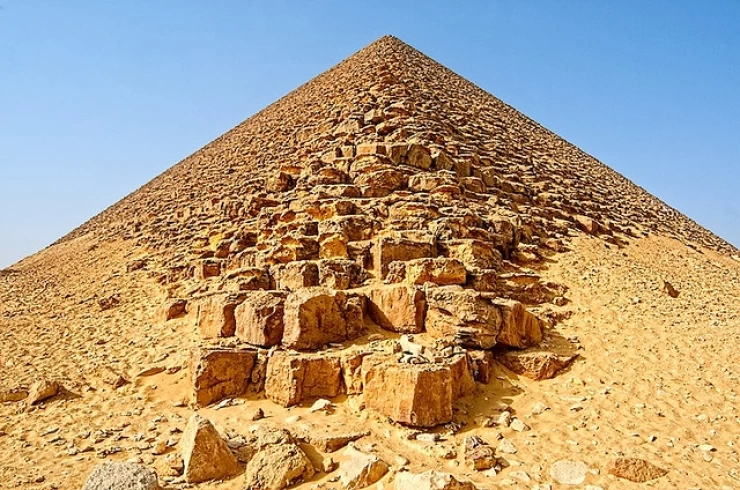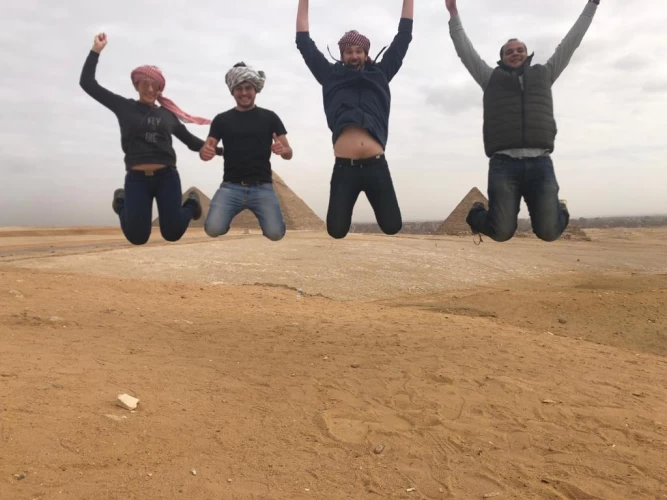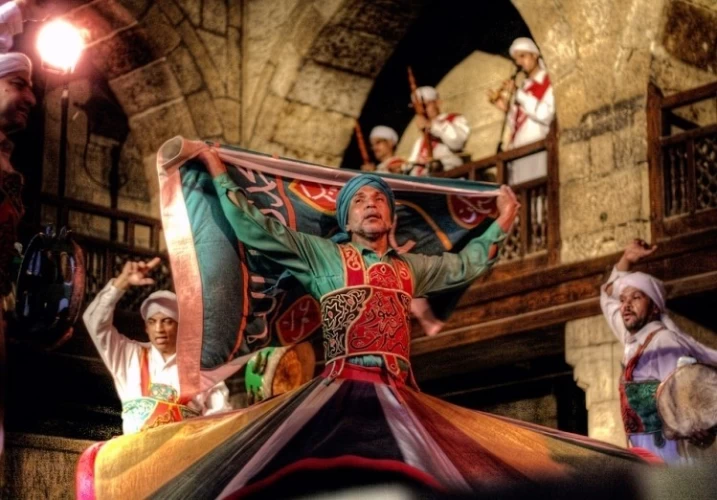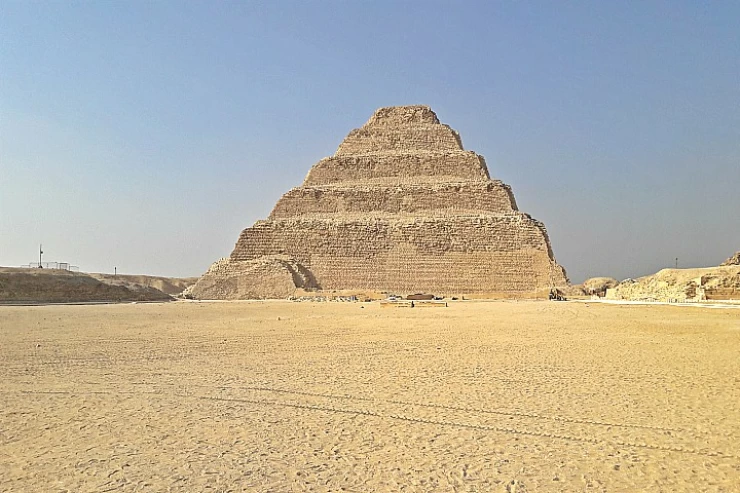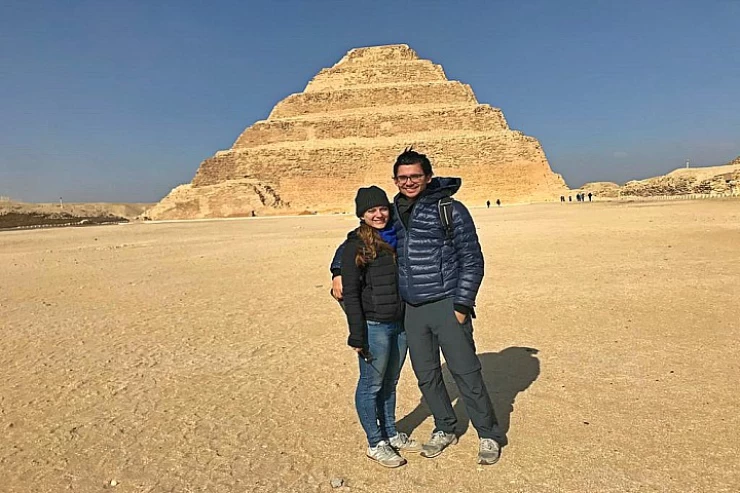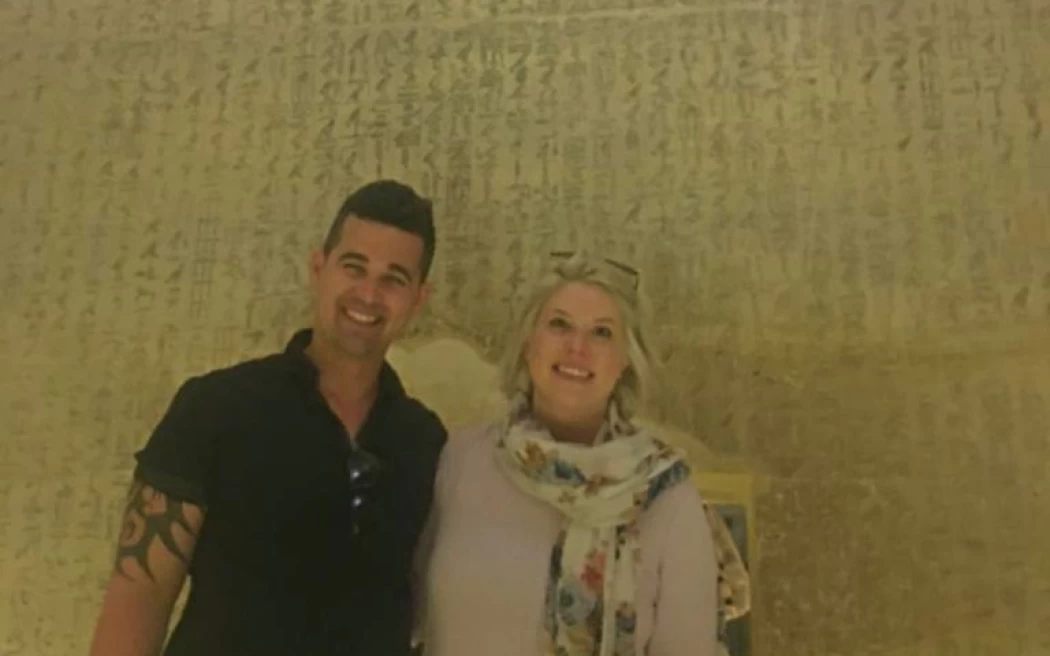
Pyramid of Teti History
The Pyramid of Teti in Saqqara near Giza was built by Pharaoh Teti, founder of the Sixth Dynasty. Teti ruled Egypt after Pharaoh Unas, who was the last king of the Fifth Dynasty. We also know that Ounas built a pyramid for himself in Saqqara, near the pyramid of Djoser, and the texts of the pyramids were engraved on its inner walls, which give us a picture of the ancient Egyptians’ perception of the other world and the journey of the deceased pharaoh in it.
The structure of the Teti pyramid was similar to the complete pyramids built in the late Old Kingdom during the fourth Egyptian dynasty, headed by the Great Pyramid, and the height of the original Teti pyramid was about 52 meters, and it is similar to the pyramid of Pepi I and the pyramid of Pepi II. The heart of the Teti pyramid consists of five terraces of sandstones from neighboring quarries . The exterior of the pyramid was covered with white limestone of unknown origin; it is known that the covering of the pyramids of Giza came from quarries on the East Bank of the Nile from the Tora quarries in Helwan.
The base of the pyramid of Teti has a rib of 78.8 meters and the slope of the pyramid was 53° 7' accordingly, the original height of the pyramid was about 52 meters .
The entrance to the pyramid is located at ground level on the north side of the pyramid and leads to an inclined vestibule . The inclined vestibule is followed by a horizontal vestibule equipped with obstacles and leads to a system of Chambers; the system of Chambers consists of a front chamber, a coffin chamber, a secondary chamber followed by three small chambers as vaults . The sarcophagus chamber reaches an area of 3,45 × 7,90 meters and is located below the center of the pyramid about 17 meters below ground level.
The roof of the sarcophagus chamber consists of three tiers of large ribbed stones distributed on two sides above the chamber, formed in the form of a gable. The sarcophagus is located in the western part of the chamber and is made of stone and inscribed with funerary hieroglyphic phrases . Hieroglyphic phrases from the texts of the pyramids are also inscribed on the walls of the sarcophagus chamber and the front chamber.
On the eastern side of the pyramid of Teti there is a funerary temple, of which little has survived due to the use of its stones in other buildings in Cairo . A small pyramid of worship is located on the south-eastern side of the pyramid . It was a large wall that surrounded the Teti pyramid, the small pyramid and the funerary temple .
On the north-eastern side of the complex are the remains of two small pyramids of the Queens ebut I and "Shwet" . A third small pyramid was also discovered in 2008, most likely that it belonged to Teti's mother, Queen sichiskhet .
The area around the Titi pyramid complex developed over time and became a large necropolis with many ancient Egyptian tombs . Among them are chapels for the ministers of mereruka, kahmani and gimni imhatat, as well as the tiatiti cemetery .
The Ptolemies and Romans also built the temples of anubion and bubastion to sanctify the machine of the ancient Egyptians Anub and Bastet on the eastern side of the pyramid of Teti.
Latest Articles
Admin
Regin of Abbas I of Egypt | Abbas Pasha I
Abbas has been often described as a mere voluptuary, but Nubar Pasha spoke of him as a true gentleman of the "old school". He was seen as reactionary, morose and taciturn, and spent nearly all his time in his palace. He undid, as far as lay in his power, the works of his grandfather, both good and bad.
Admin
Biography of Tewfik Pasha/ Tawfiq of Egypt
Muḥammad Tawfīq Pasha (born April 30, 1852, Cairo, Egypt—died Jan. 7, 1892, Ḥulwān) was the khedive of Egypt (1879–92) during the first phase of the British occupation. The eldest son of Khedive Ismāʿīl, Tawfīq, was distinguished from other members of his family by having engaged in study in Egypt rather than in Europe
Admin
Story of Gabal Shayeb Al Banat - Red Sea Mountain
Jabal shayb al-banat is one of the Red Sea Mountains in the eastern desert in Egypt, located to the west of the city of Hurghada at a latitude of 27 degrees north and a longitude of 33.5 degrees east of the Greenwich line approximately, this mountain is the highest mountain peak in the eastern desert with a height of up to 2185 meters, it is a prominent mass of igneous rocks
Admin
Neper God Of Grain
Neper was the deity of grains, particularly cereals that were important in Ancient Egypt, such as wheat and barley. It was stated that he foretold when the crops would grow, be harvested, and disappear.
Admin
Badr Museum in Farafra
The Badr Museum is located in a mud building, which is the common home found in this medieval part of Egypt. All of the artwork that was created by the artist is quite unique. His work almost always depicts life in the Farafra Oasis and he provides the work through both painting and sculpting.
Admin
The Black Head Temple
The Black Head Temple is a small temple dedicated to the worship of the goddess Isis and was discovered in 1936, by chance, in the Black Head area, which is now located within the Mandara area of the Montazah district in Alexandria. This temple was moved from its original place to the Latin Necropolis in 1994.
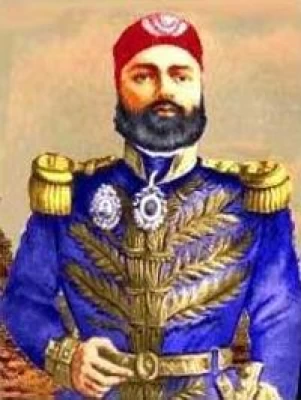
-webp.webp)
